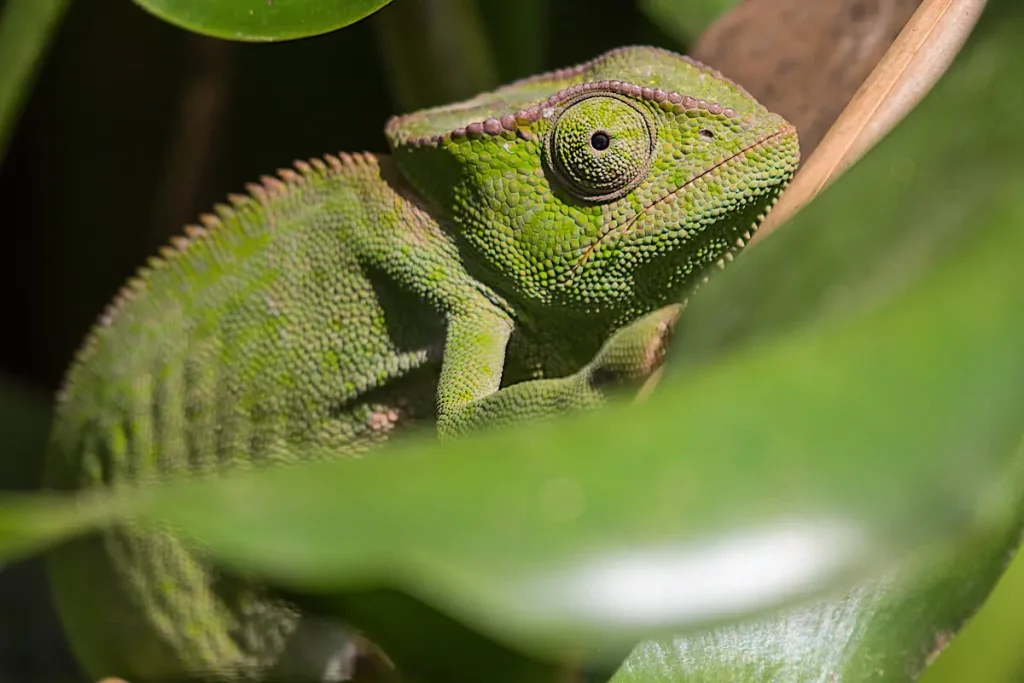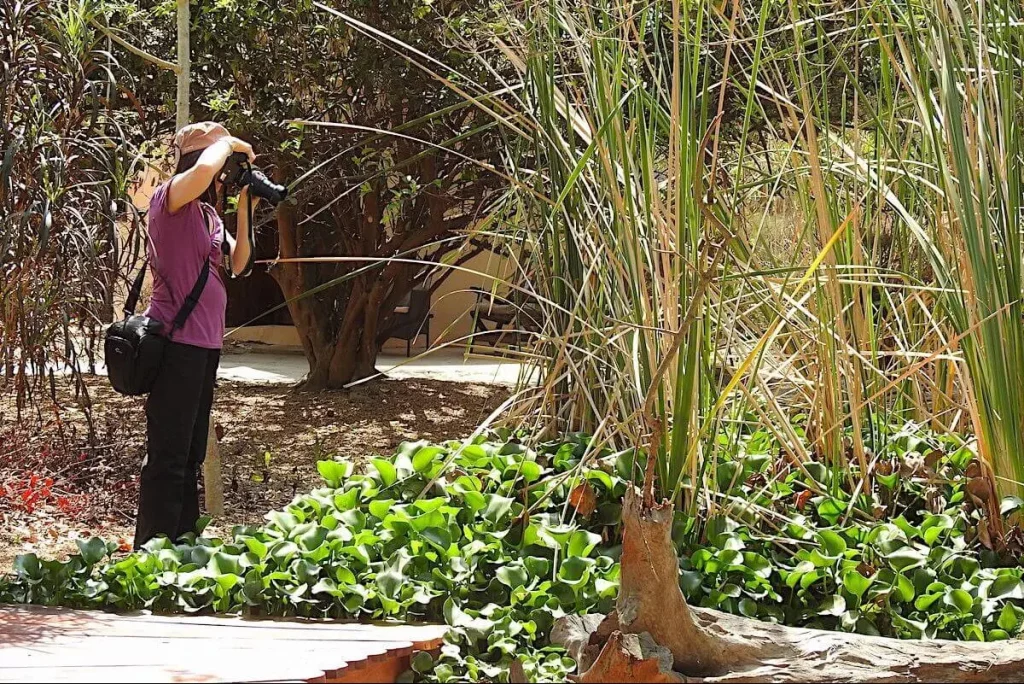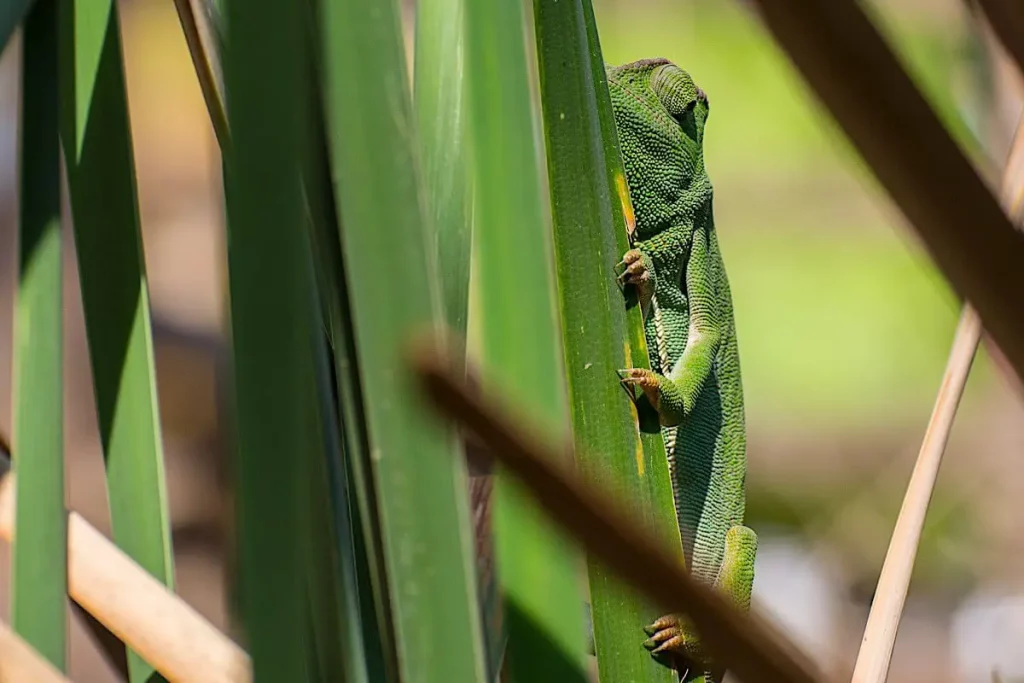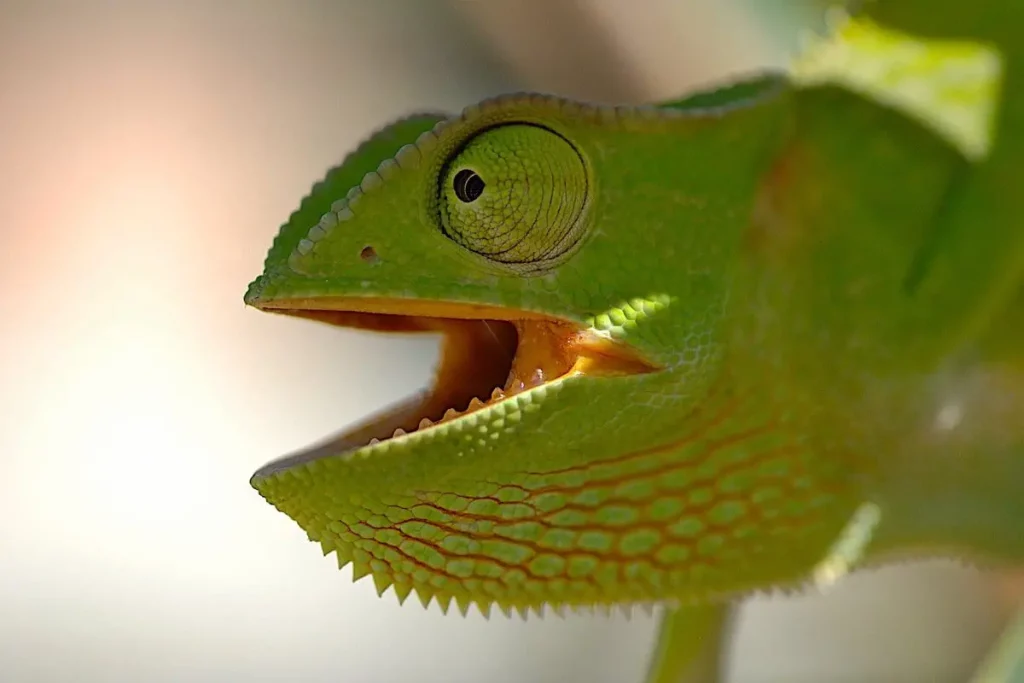Chameleons live primarily in the mainland of sub-Saharan Africa and of course right here in The Gambia.
This one below lives at our lodge in our eco-pools filtration system. It’s great fun trying to spot him. Each day our guests will stare into the reed beds trying to catch a glimpse of him. Often for thirty minutes or more. Then, someone will shout out, ” I see him “.
Of course, once you do actually see him, it’s hard to imagine how you missed him for the previous thirty minutes.
I’ve got 360′ Chameleon vision.
Chameleons have the most distinctive eyes of any reptile. Their upper and lower eyelids are joined, with only a pinhole large enough for the pupil to see through.
Each eye can pivot and focus independently, allowing the chameleon to observe two different objects at the same time. This gives them a full 360-degree arc of vision around their bodies. Chameleons have very good eyesight for reptiles, letting them see small insects from a 5–10 meter distance.
Don’t touch me!
Not only don’t chameleons like being seen but they also don’t like being handled. It’s often the case when people spot a chameleon their first reaction is to pick it up. They are not naturally aggressive but would feel stressed at being handled. To a chameleon, being picked up would be a prelude to being eaten. To that end, if you are ever lucky enough to see one in the wild, just watch in wonder and definitely don’t stress him out!
Why do I change colour?
For a long time, it was thought that chameleons change colour by dispersion of pigment-containing organelles within their skin. However, research conducted in 2014 on panther chameleons has shown that pigment movement only represents part of the mechanism.
Chameleons have two superimposed layers within their skin that control their colour and thermoregulation. The top layer contains a lattice of guanine nanocrystals, and by exciting this lattice the spacing between the nanocrystals can be manipulated, which in turn affects which wavelengths of light are reflected and which are absorbed.
Exciting the lattice increases the distance between the nanocrystals, and the skin reflects longer wavelengths of light.
Thus, in a relaxed state, the crystals reflect blue and green.
But in an excited state the longer wavelengths such as yellow, orange, green, and red are reflected.
The skin of a chameleon also contains some yellow pigments, which combined with the blue reflected by a relaxed crystal lattice results in the characteristic green colour which is common of many chameleons in their relaxed state.
Chameleon colour palettes have evolved through evolution and the environment.
Chameleons living in the forest have a more defined and colourful palette compared to those living in the desert or savanna, which have more of a basic, brown and charred palette.




